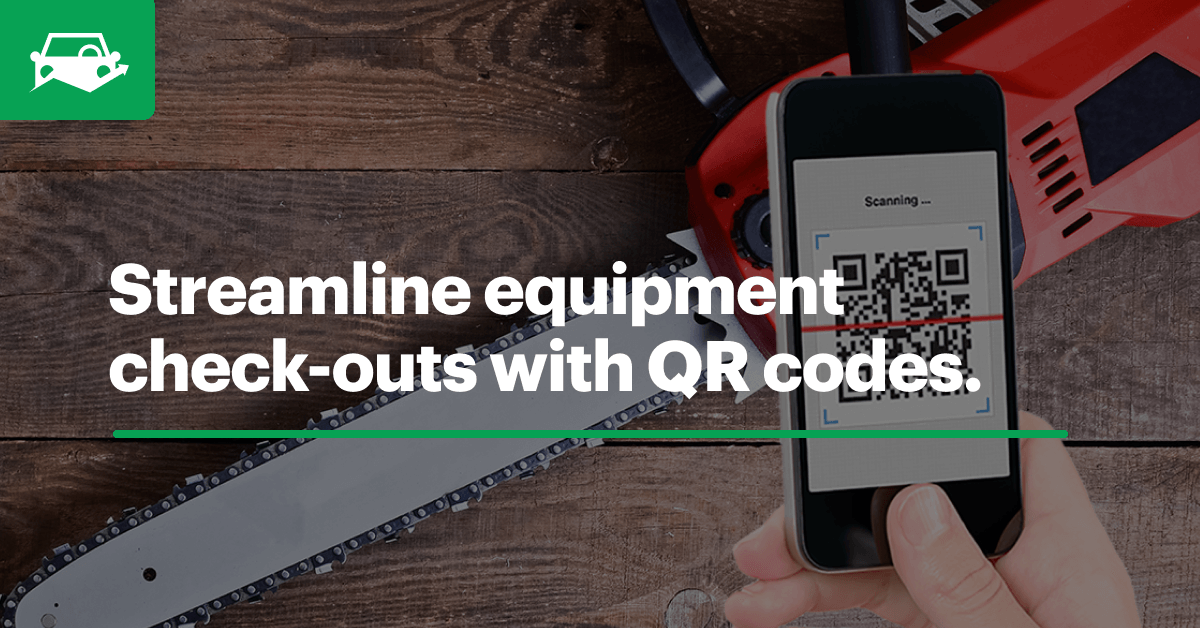Equipment tracking systems provide real-time asset visibility no matter where you are. Tracking equipment in a cloud-based software is the best way to keep your team accountable and productive.
![]()
How Does an Equipment Tracking System Work?
Equipment tracking systems solve many of the day-to-day issues fleet managers often face. Maintaining control of individual equipment can be challenging if you’re relying on whiteboards, paper forms or verbal assignments.
Manually tracking equipment can cause confusion across your team. If a piece of equipment ends up broken or missing, you may not have insight into who should be held accountable.
This lack of insight causes communication issues and downtime. Depending on the piece of equipment, this can severely impact productivity and profitability.
Many fleet managers are turning to technology to avoid the stress of manual equipment tracking. Equipment tracking systems are an effective solution for maintaining real-time asset visibility and cultivating accountability across your team.
Leveraging a cloud-based software as your equipment tracking system keeps you informed of equipment status and location no matter where you are. Managers can create and edit equipment assignments and improve communication across their team.
Assign Equipment to Individual Operators
Managing a dispersed fleet is challenging on its own. Adding a variety of equipment to the mix can cause even more confusion if you don’t have an efficient equipment tracking system.
One of the benefits of an equipment tracking system is leveraging equipment assignments to keep tabs on team usage. Assigning equipment to individual team members ensures your crew is on the same page and stays accountable for equipment.
Fleet managers can create and manage equipment assignments in software. Once assignments are set, team members can view their assignments in a mobile app.
By keeping everyone on the same page with equipment assignments, you also create an audit trail for all equipment. You may even choose to implement a check-in check-out system to ensure equipment stays organized and accounted for when not in use.
If a piece of equipment goes missing or is broken, fleet managers can refer to equipment assignments and hold team members accountable for missing equipment. Keeping tabs on equipment in software allows you to easily track down equipment to avoid help issues.
Cultivating equipment accountability across your team enables them to take an active role in securing, organizing and maintaining their equipment. This can improve morale and enable better communication when equipment issues arise.
Track Equipment Location and Status in Real Time
Whether your equipment is on the move or in storage, it’s important to know its exact location. Equipment tracking systems allow you to access equipment locations in real time.
With a mobile-first equipment tracking system, fleet managers maintain constant asset visibility. Managers can access equipment data in a configurable dashboard to stay informed of equipment status and location.
Sometimes certain pieces of equipment are out of service for repairs or other issues. With an equipment tracking system, managers can quickly update and view status for each piece of equipment.
Equipment statuses keep you and your team informed of equipment usage. View at a glance when equipment is active, in-use or out-of-service to stay informed and improve equipment assignment schedules.
Tracking equipment status and location is especially important for fleet managers with dispersed fleets. Instead of spending hours trying to manually track equipment, equipment tracking systems provide real-time visibility across operations.
Implement the 5S System for Equipment Organization and Efficiency
In addition to tracking equipment in software, it’s equally important to physically organize your equipment. Storing tools and equipment in an organized system ensures you can easily access a tool when needed.
One of the best methods of equipment organization is the 5S System. With these five simple words, you can maximize efficiency and stay organized:
- Sort
- Set
- Shine
- Standardize
- Sustain
Easy to remember, right? Using the 5S System to keep your equipment organized can help your team avoid the frustration of misplaced tools. By having every tool in a designated place, you can easily track equipment inventory and ensure cleanliness and organization across storage areas.
Leverage Fleetio’s Equipment Tracking System
Implementing an equipment tracking system may sound intimidating, but user-friendly software, like Fleetio, can provide comprehensive asset visibility in no time. Fleetio’s new equipment tracking solution allows you to monitor equipment location and manage equipment assignments from anywhere.
An equipment tracking system like Fleetio improves the way you collaborate with your team. With software and a mobile app, your entire team can easily sync regarding equipment health, location and status.
Fleetio’s equipment tracking system keeps your team accountable for equipment and allows them to easily communicate equipment issues with you in real time. Instead of learning about issues days or weeks later, fleet managers can stay informed and solve issues quickly to avoid downtime. Proactively tracking equipment in a centralized software is the best way to maintain visibility and maximize efficiency.
Keep a close eye on equipment no matter where you are on the map! Start your free trial of Fleetio or request a demo today.



